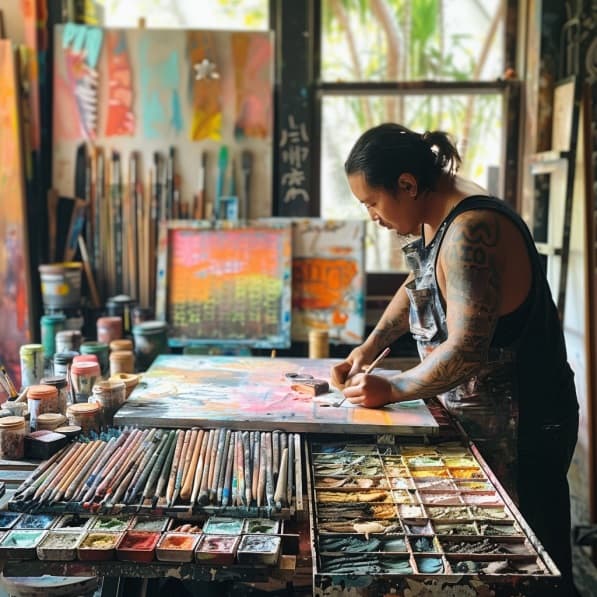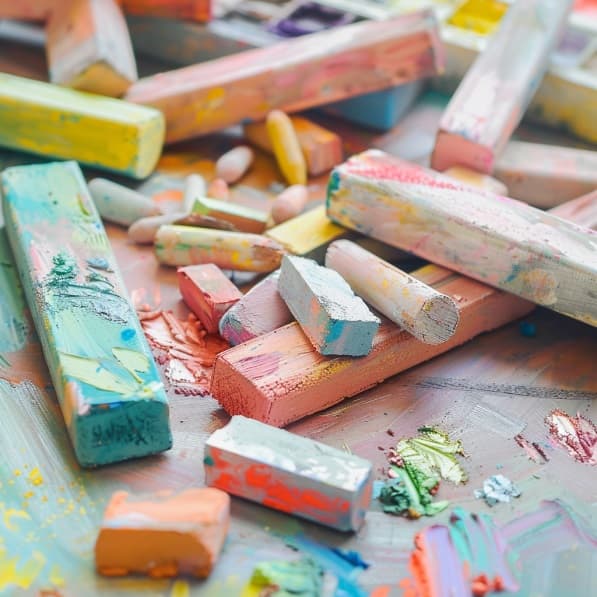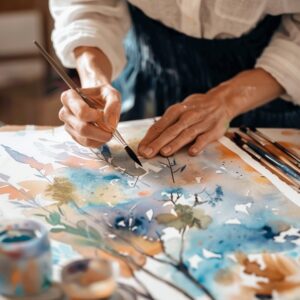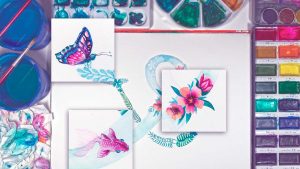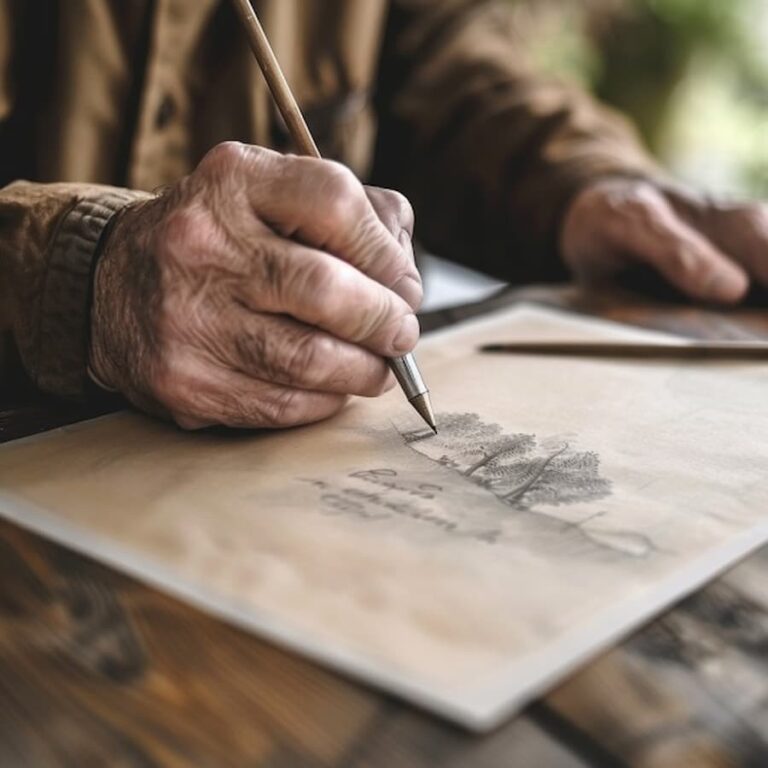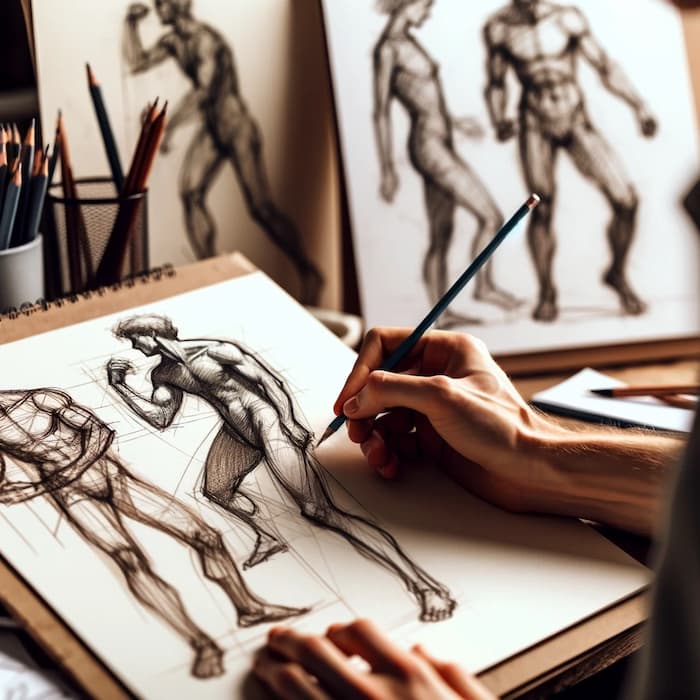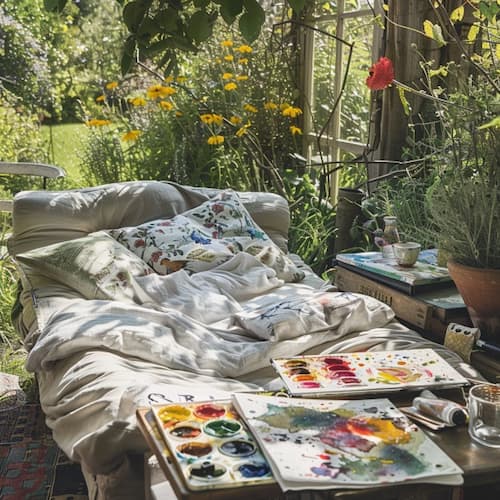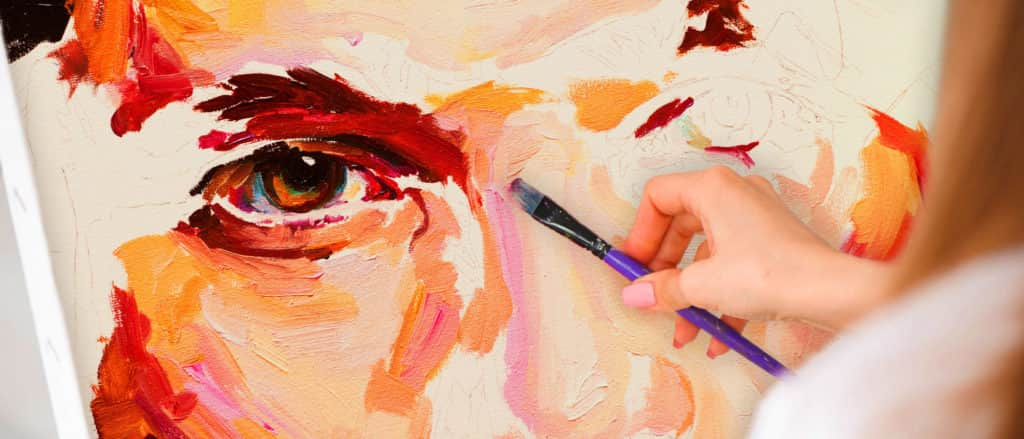Pastel painting is one of the most versatile and expressive artistic techniques.
In this article, we will explore the basics of pastel painting, from the choice of materials to the essential techniques for mastering this art.
Introduction to Pastel Painting
Pastels, known for their vibrant range of colors and textures, offer a unique experience for artists.
Unlike other mediums such as oil or watercolor, pastel combines the qualities of drawing and painting in a compact and accessible form.
But what makes pastel so special?
What are Pasteles?
Pastels are sticks of dry pigment that are mixed with a binder to hold their shape.
There are three main types of pastels:
- Dry Pastels: Include soft and hard pastels.
They are ideal for a wide range of techniques due to their ability to blend and blend easily. - Oil Pastels: Contain oils that give them a creamy texture.
They are perfect for thicker and layered effects. - Pastels in Bars: Combine characteristics of dry pastels and oil pastels, offering a balance between fluidity and texture.
Basic Principles of Pastel Painting
The first step in painting with pastels is to understand how the different types of pastels work and how they can be applied to various surfaces.
Materials Needed and Choice of Cakes
- Soft Pastels: They offer a wide variety of vibrant colors and are easy to blend.
However, their soft texture can be a challenge for beginners. - Hard Pastels: They are ideal for details and fine lines due to their firmer consistency.
- Oil Pastels: Provide a more robust finish and are excellent for layering and texturing.
Papers and Supports
The choice of paper is crucial to the success of a pastel painting.
Textured papers allow for better pigment adhesion.
Some of the most recommended include:
- Canson Mi-Teintes paper: Popular for its texture and variety of colors.
- Sand Paper: Offers a rougher texture, ideal for retaining several layers of cake.
- Pastelmat paper: Combines smoothness and texture, providing a unique surface to work on.
Other Materials
- Fixative: Used to fix the pastel and prevent stains.
- Diffusers or Tortillones: Tools for blurring and mixing colors.
- Gloves and Mask: To protect from cake dust.
Pastel Painting Techniques
Once you have your materials, it’s time to explore basic pastel painting techniques.
- Blurring Technique: Blurring is essential for creating smooth transitions and gradient effects.
You can blend with your fingers, a soft cloth, or a blender.
The key is to apply the pastel in light layers and blend to the desired softness. - Layering: The layering technique allows for depth and texture.
Start with lighter colors and work toward darker colors, applying each layer gently to avoid saturating the paper. - Texture Effects: To create texture, you can use techniques such as scratching or rubbing.
Scratching involves scraping off the top layer of pastel to reveal the color underneath.
Rubbing uses tools such as stiff brushes or spatulas to create patterns on the surface. - Color Blending: Color blending in pastels can be achieved in several ways.
One of the most common is to overlap layers of different colors and blend them.
You can also mix directly on the palette before applying to the paper.
Care and Conservation
Caring for your paints and materials is crucial to maintain their quality over time.
- Fixing the Work: Applying a fixative at the end of your work helps protect the pastel from smudging and wear.
Use spray fixatives in a well-ventilated area and with light coats to prevent colors from bleeding. - Storage: Store your paints in protective folders or frames with glass to avoid direct contact with the surface.
Upright storage is ideal to prevent pastel dust from accumulating. - Material Maintenance: Keep your cakes organized and clean.
You can use a box with compartments and a soft cloth to wipe off dust residue.
Tips and Tricks for Beginners
-Practice Light Hand
Light pressure when applying the pastel allows for smoother layers and better blending possibilities.
Avoid pressing too hard, as this can saturate the paper and make correction difficult.
-Experiment with Textures
Don’t limit yourself to using only your fingers to blend.
Try different tools such as brushes, sponges, and blenders to see how they affect the texture and appearance of the cake.
-Use Color Strategically
Choose complementary colors to create contrast and analogous colors for smooth transitions.
Experiment with color combinations to discover new palettes.
-Learn from the Masters
Look at works by well-known artists who use pastel for inspiration and to learn new techniques.
Looking at how they handle light, color, and texture can offer valuable insights.
-Keep your work area clean.
Cake dust can be harmful if inhaled in large quantities.
Be sure to work in a well-ventilated area and regularly clean your workspace.
Pastel painting offers an exciting opportunity to explore color and texture in a direct and tactile way.
With these basic principles, you’ll be well on your way to mastering this technique and creating vibrant, dynamic works of art.
To learn how to work with pastels like a real professional, knowing all its characteristics, use of materials and how to get the most out of this technique, visit our Painting Course with Lifetime Access + Workshops.
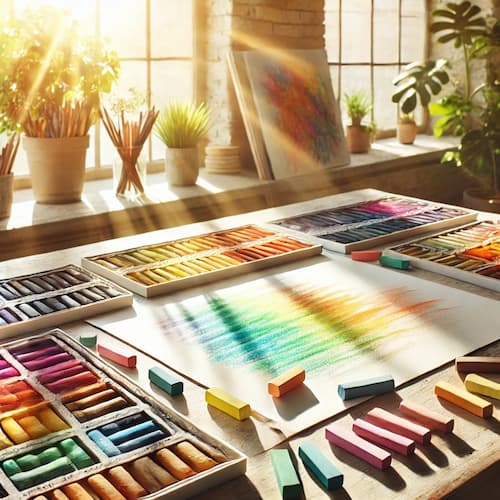
¿Qué son los pasteles y cómo se utilizan?
Los pasteles son una técnica de dibujo y pintura que ofrece una textura única y colores vibrantes. A diferencia de las pinturas líquidas, los pasteles se aplican directamente sobre la superficie con las manos o herramientas, lo que permite un control total sobre la aplicación y mezcla de colores. Esta técnica se ha utilizado durante siglos y es muy apreciada por su capacidad para crear efectos suaves y detallados.
Tipos de pasteles: El corazón de los materiales para pintar con pastel
Cuando se trata de elegir los pasteles, material de dibujo correcto, existen varios tipos que debes conocer. Cada uno tiene sus propias características, por lo que es importante que los entiendas antes de decidir cuáles usar.
Pasteles suaves o blandos
Los pasteles suaves son los más populares entre los artistas, gracias a su textura cremosa y fácil aplicación. Están compuestos principalmente de pigmento y un mínimo de aglutinante, lo que les confiere una calidad polvorienta que se adhiere fácilmente al papel. Son ideales para trabajar en capas y crear transiciones suaves entre colores.
Pasteles duros
Los pasteles duros tienen más aglutinante, lo que los hace menos polvorientos y más fáciles de controlar para detalles precisos. Aunque son menos vibrantes que los pasteles suaves, son útiles para delinear y agregar detalles finos en una obra. Muchos artistas los utilizan en combinación con los pasteles suaves.
Pasteles al óleo
Los pasteles al óleo ofrecen una textura más grasosa debido a su base de aceite. Estos pasteles permiten mezclas más ricas y texturas gruesas en la obra, a diferencia de los pasteles tradicionales que tienden a ser más secos. Son una opción excelente para quienes buscan experimentar con texturas y efectos de pintura más densos.
Superficies recomendadas: El papel como aliado de los materiales para pintar con pastel
El papel es otro componente clave cuando hablamos de materiales para pintar al pastel. Dado que los pasteles se adhieren a las fibras del papel, elegir la superficie correcta es crucial para el éxito de tu obra.
Papeles texturizados
Los papeles texturizados o de grano grueso son ideales para los pasteles. Estos papeles permiten que el polvo del pastel se fije en los huecos de la textura, lo que facilita la creación de capas y mezclas de colores. El papel Canson Mi-Teintes y el papel de lija son ejemplos populares.
Papeles lisos
Aunque no es la opción más común, los papeles lisos pueden utilizarse en técnicas específicas donde se requiere un mayor control sobre los detalles. No obstante, este tipo de papel no retiene tanto pigmento, lo que puede limitar la cantidad de capas que se pueden aplicar.
Otros soportes para pintar al pastel
Además del papel, se pueden utilizar otros soportes como lienzo preparado o paneles especialmente diseñados para pasteles. Sin embargo, el uso de estos soportes es más común con los pasteles al óleo, ya que estos pueden necesitar una base más sólida.
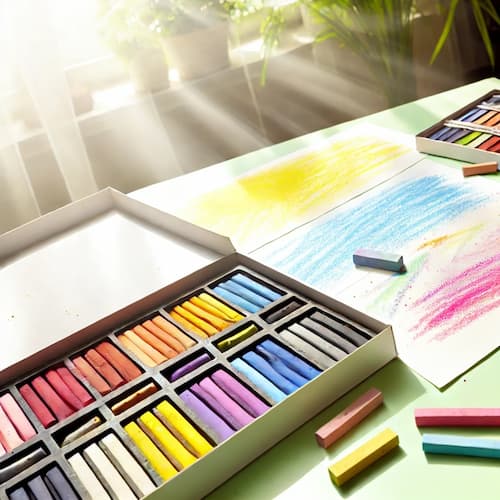
Herramientas y accesorios clave: Materiales esenciales para pintar con pastel
Además de los pasteles y el papel, existen otros materiales para pintar al pastel que te ayudarán a trabajar de manera más eficiente.
Fijadores: Protección para tus obras de arte
Uno de los retos al trabajar con pasteles es la fragilidad de la obra terminada. Los fijadores en spray son esenciales para proteger tu trabajo y evitar que los colores se desprendan con el tiempo. Es recomendable aplicar el fijador en capas ligeras y sucesivas para no alterar la intensidad de los colores.
Esfuminos: Para difuminar y suavizar
Los esfuminos son cilindros de papel comprimido que permiten suavizar los bordes y mezclar colores sin ensuciar los dedos. Estos accesorios son útiles para lograr transiciones suaves en áreas detalladas.
Cuchillos de paleta o espátulas
Aunque su uso no es tan común en los pasteles suaves, las espátulas son extremadamente útiles cuando se trabaja con pasteles al óleo. Permiten aplicar capas gruesas de color y crear texturas interesantes.
Guantes y pañuelos
Dado que los pasteles se aplican directamente con las manos, es común mancharse. Los guantes de látex o algodón pueden ayudar a mantener las manos limpias y evitar que los aceites naturales de la piel interfieran con los pigmentos. Además, los pañuelos de papel son útiles para limpiar las manos y las herramientas mientras trabajas.
Consejos para cuidar tus materiales para pintar con pastel
El cuidado adecuado de tus materiales para pintar con pastel es esencial para prolongar su vida útil y mantener su calidad. Aquí te ofrecemos algunos consejos importantes:
Almacenamiento de pasteles
Los pasteles suaves y duros deben almacenarse en cajas separadas para evitar la mezcla de colores. Además, se recomienda envolverlos en papel o utilizar separadores de espuma para protegerlos de golpes.
Almacenamiento del papel
El papel debe almacenarse en un lugar seco y plano para evitar que se deforme o dañe. Si planeas trabajar en una obra a largo plazo, puedes considerar enmarcar el papel para mantenerlo en perfectas condiciones.
Limpieza de esfuminos y herramientas
Los esfuminos y otros utensilios de mezcla pueden acumular pigmento con el tiempo, lo que puede afectar la precisión de tus mezclas. Para limpiarlos, puedes frotarlos suavemente con un paño o utilizar una lija fina.
Para aprender a trabajar con pastel como un auténtico profesional, conociendo todas sus características, uso de materiales y cómo sacarle el máximo partido a esta técnica, visita nuestro Curso de Pintura con Acceso Vitalicio + Talleres.


